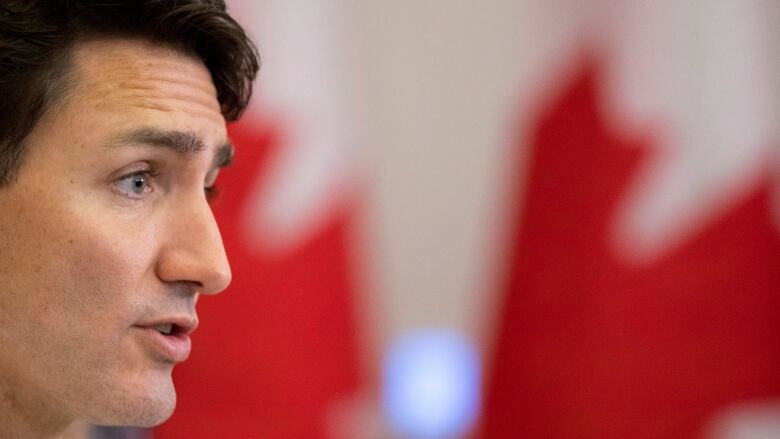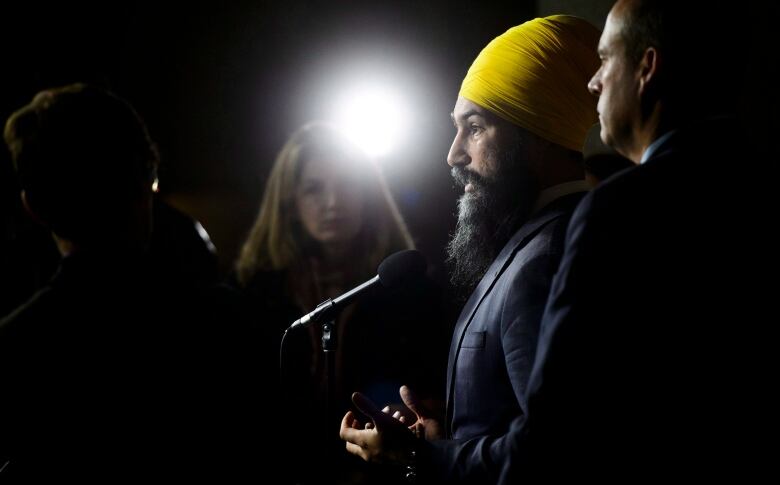365 days to go and Trudeau's Liberals have the edge on the 2019 election
Parties that lead in the polls one year before an election win ... most of the time

A lot can happen in a year.
But all else being equal, a party would prefer to be ahead rather than behind in the run-up to a general electioneven with a full year still to go.Which is where Justin Trudeau's Liberals find themselves with 365 days left before the 2019 federal election.
The next vote is scheduled to be held one year from today, on Oct. 21, 2019. The polls right now suggest the odds are in Trudeau'sfavour. But the political environment remains competitive and volatile.
Still, history is on the Liberals' side. In more than three-quarters of elections held since the Second World War, the party leading in the polls 12 months out has heldon to win 12 months later.
According to the CBC'sPoll Tracker, an aggregation of all publicly available polling data, the Liberals lead with 37.3 per cent support nationwide, putting them four percentage points ahead of the Conservatives, who trail with 33.1 per cent.
The New Democrats find themselves stuck in third place with 15.5 per cent support, followed by the Greens at seven per cent andthe Bloc Qubcois at 3.9 per cent. Another three per cent of Canadians say they would vote for another party including the 1.4 per cent who say they will back Maxime Bernier's People's Party.
With these numbers, the Poll Tracker estimates that the Liberals would have a two-in-three chance of winning a majority government and a six-in-seven chance of winning the most seats. That would leavethe Conservatives with about a one-in-seven chance of winning the most seats if the polls are still showing these kinds of numbers in one year's time.
The best current estimate is that these levels of support would produce around 182 seats for the Liberals, well over the 169-seat threshold required for a majority government. According to that forecast, the Conservatives would follow with 127 seats, the NDP with 19 seats, the Bloc with eight and the Greens with two.
Trudeau hopeshistory repeats itself
Voting intentions have changed significantly over the course of this past year. The margin between the Liberals and Conservatives in the Poll Trackerwas as wide as eight points in December, while the Tories ledby as much as four points in March.So things could change over the next 12 months.
That's normal. In 23 federal elections held since 1945, parties have seen their support shift by an average of nearly six points between where they stood in the polls one year out and where they ended up on election day.
Nevertheless, the leading party in the polls a year before those 23elections won 16 times and lost only five times. In two of those losses in 1957 and 1979the party leading the polls a year out still won the popular vote but lost on the seat count. In the remaining two elections, two parties were tied for the lead in the polls a year out.
So while the mood of the electorate can shift dramatically in a year, it tends not to result in a different party coming out on top. But the historical record suggests we should not be surprised if the margin between the Liberals and Conservatives narrows. In the year before an election, the gap between the leading and trailing parties in the polls has shrunk by an average of three points.
Liberals stabilizing after falling behind
At the moment, however, the trend line is heading in the opposite direction for the Liberals. After falling into a tie or behind the Conservatives between March and July a decline that coincided with the prime minister's troubled trip to India the party has moved back ahead since the beginning of the summer.
The party leads comfortably in both Ontario and Quebec two provinces that, on the basis of current polling,would push the party most of the way toward a majority government on their own. The Liberals'leads in British Columbia and Atlantic Canada would push them the rest of the way to 169.
Polls by the Innovative Research Group and Abacus Data suggest more Canadians view Trudeau favourably than not, though a majority of voters no longer have a positive impression of him. But he leads Conservative Leader Andrew Scheer by an average of 14 points on the question of who Canadians prefer as prime minister a far wider gap than exists between the two parties.
Scheer still waiting to make an impression
It suggests that while Trudeau remains a positive asset for the Liberals, Scheeris not boosting the Conservatives beyond the brand appeal of the party. Since theirpeak during the height of the India controversy, the Conservatives have slipped five points.
But Scheer can still boast that his party is in a better position than it was three years ago. The Poll Tracker has consistently pegged the Conservatives as on track for more than the 99 seats they won in 2015. And while the Liberals currently stand about two points below their popular vote share in the last election, the Conservatives sit about a point higher than they did in 2015.

Scheer still has some work to do to become better known.About 25 to 26 per cent of Canadians have a favourable view of Scheer; roughly the same share have a negative view of him. But between 46 and 53 per cent of Canadians say they have either a neutral opinion of Scheeror none at all suggesting the Conservative leader has still not made a significant impression on half of the country some 17 months after taking over the party.
Jagmeet Singh's NDP continues to struggle
Jagmeet Singh, who has been the leader of the NDP for a little more than a year, is also struggling to make a mark onabout half of the electorate. But polls suggest Singh's doing worse than Scheerwhen it comes to connecting with voters: roughly 18 to 20 per cent have a positive view of him.
Just seven per cent choose Singh as the best person to be prime minister, only one point ahead of Green Party Leader Elizabeth May and just two points ahead of Bernier.

The New Democrats have slipped four points since the end of July, when the honeymoon from the Ontario NDP's robust performance in the June provincial election began to wear off. The slide of seven points in Ontario since then as well as the party's stagnation in Quebec, where it is registering just 15 per cent support puts the NDP in a precarious position.
If an election were held today, the NDP would have a good chance of being reduced to its smallest caucus since Jack Layton's first election as party leader in 2004.
Greens, Berniercould surprise in 2019
The weakness of the NDPhelps the Liberals own the centre-left vote. Itmight open an opportunity for the Greens as well. The party's provincial cousins have scored breakthroughs in Ontario and New Brunswick in elections this year and lead the polls in Prince Edward Island.
That has translated into a slight uptick nationally for the Greens,who sit at their highest level of support since before the last election. Regionally, the Greens are scoring well in B.C. (14 per cent) and have surpassed the NDP in Atlantic Canada with 10 per cent support.
May, however, is not as popular as her provincial counterparts. David Coon and Peter Bevan-Baker, leaders of the Greens in New Brunswick and P.E.I., respectively, are the most popular party leaders in their provinces, while May scores about as highas Scheer or Singh in popularity.

She'sstill doing better than Bernier, though. The runner-up in the 2017 Conservative leadership race is only seen favourably by between nine and 13 per cent of the population, while 32 to 41 per cent have a negative view of the leader of the new People's Party of Canada.
The PPCis hardly registering in the polls, but it does have potential for modest growth. About three to six per cent of Canadians see Bernier as the best person to be prime minister; according to NanosResearch, 11 per centwould consider voting for the PPC. That's still a low ceiling for Bernier's new political vehicle, but it still gives himthe potential to change the electoral calculus significantly.
Bernier is only one wild card in what could be a wild year in federal politics. The tone on Parliament Hill has become contentious and nasty, with months stillto go before the House dissolves ahead of the election. Singh is seeking a seat in the upcoming byelection in Burnaby South, but is by no means a lock to win it. Inroads by the People's Alliance in New Brunswick and the Coalition AvenirQubec suggestvoters are shopping around for alternative options.
A lot can happen in any political year. The next 365 days could be especially unpredictable.












_(720p).jpg)


 OFFICIAL HD MUSIC VIDEO.jpg)
.jpg)



























































































